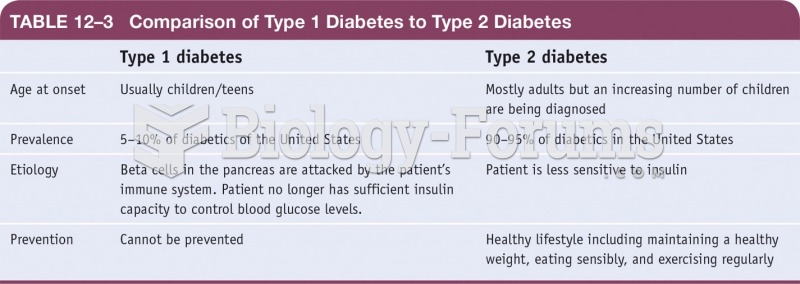|
|
|
Human kidneys will clean about 1 million gallons of blood in an average lifetime.
Computer programs are available that crosscheck a new drug's possible trade name with all other trade names currently available. These programs detect dangerous similarities between names and alert the manufacturer of the drug.
Dogs have been used in studies to detect various cancers in human subjects. They have been trained to sniff breath samples from humans that were collected by having them breathe into special tubes. These people included 55 lung cancer patients, 31 breast cancer patients, and 83 cancer-free patients. The dogs detected 54 of the 55 lung cancer patients as having cancer, detected 28 of the 31 breast cancer patients, and gave only three false-positive results (detecting cancer in people who didn't have it).
According to the National Institute of Environmental Health Sciences, lung disease is the third leading killer in the United States, responsible for one in seven deaths. It is the leading cause of death among infants under the age of one year.
There are 60,000 miles of blood vessels in every adult human.
 Embroidered housings and trappings of the elephant and Howdah exhibited by her Majesty in Great Exhi
Embroidered housings and trappings of the elephant and Howdah exhibited by her Majesty in Great Exhi
 Noid lights are usually purchased as an assortment so that one is available for any type or size ...
Noid lights are usually purchased as an assortment so that one is available for any type or size ...





